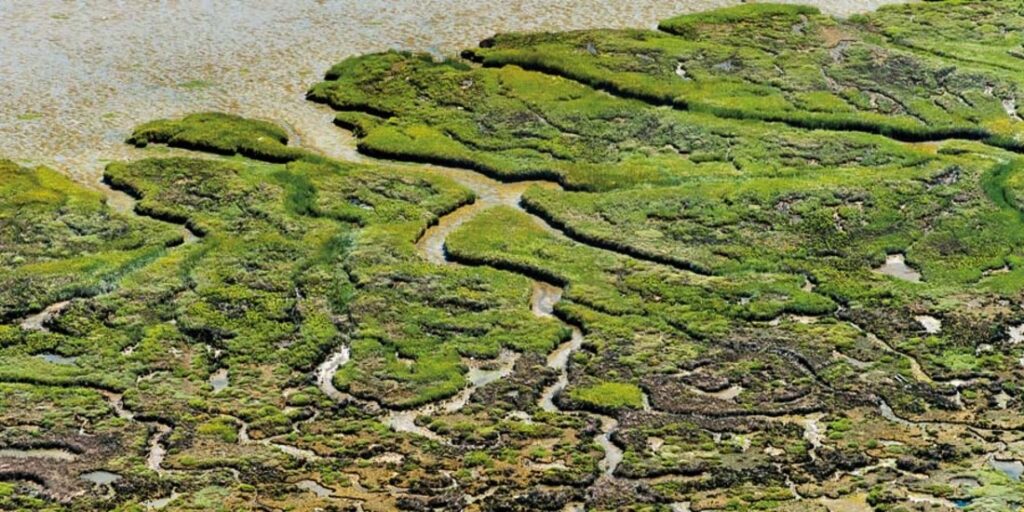By Erica Gies.
In San Francisco Bay, scientists are looking for a better way to rebuild flagging marshland.
The water in California’s San Francisco Bay could rise more than two meters by the year 2100. For the region’s tidal marshes and their inhabitants, such as the endangered Ridgway’s rail and the salt marsh harvest mouse, it’s a potential death sentence.
Given enough time, space, and sediment, tidal marshes can build layers of mud and decaying vegetation to keep up with rising seas. Unfortunately, upstream dams and a long history of dredging bays and dumping the sediment offshore are starving many tidal marshes around the world of the sediment they need to grow.
To keep its marshes above water, San Francisco Bay needs more than 545 million tonnes of dirt by 2100. Yet for restorationists looking to rebuild marshes lost to development and fortify those that remain, getting enough sediment is just one hurdle: the next challenge is figuring out a way to deliver it without smothering the very ecosystem they’re trying to protect.
To really understand the problem, one need only look at Louisiana. Facing the potential loss of nearly all its wetlands by 2070, the state’s Coastal Protection and Restoration Authority and the US Environmental Protection Agency have dredged the Mississippi River and pumped the slurry onto a rapidly drowning marsh along Bayou Dupont, south of New Orleans.
This approach builds up terrain quickly, but it also buries the marsh’s plants and animals in a thick coating of muck. Firehosing sediment into the marsh also destroys the ecosystem’s natural complexity, filling in the small variations in elevation that allow different plants to flourish and smoothing over the natural bumps and ridges that absorb excess energy from waves or storms.
read more at hakaimagazine.com.

